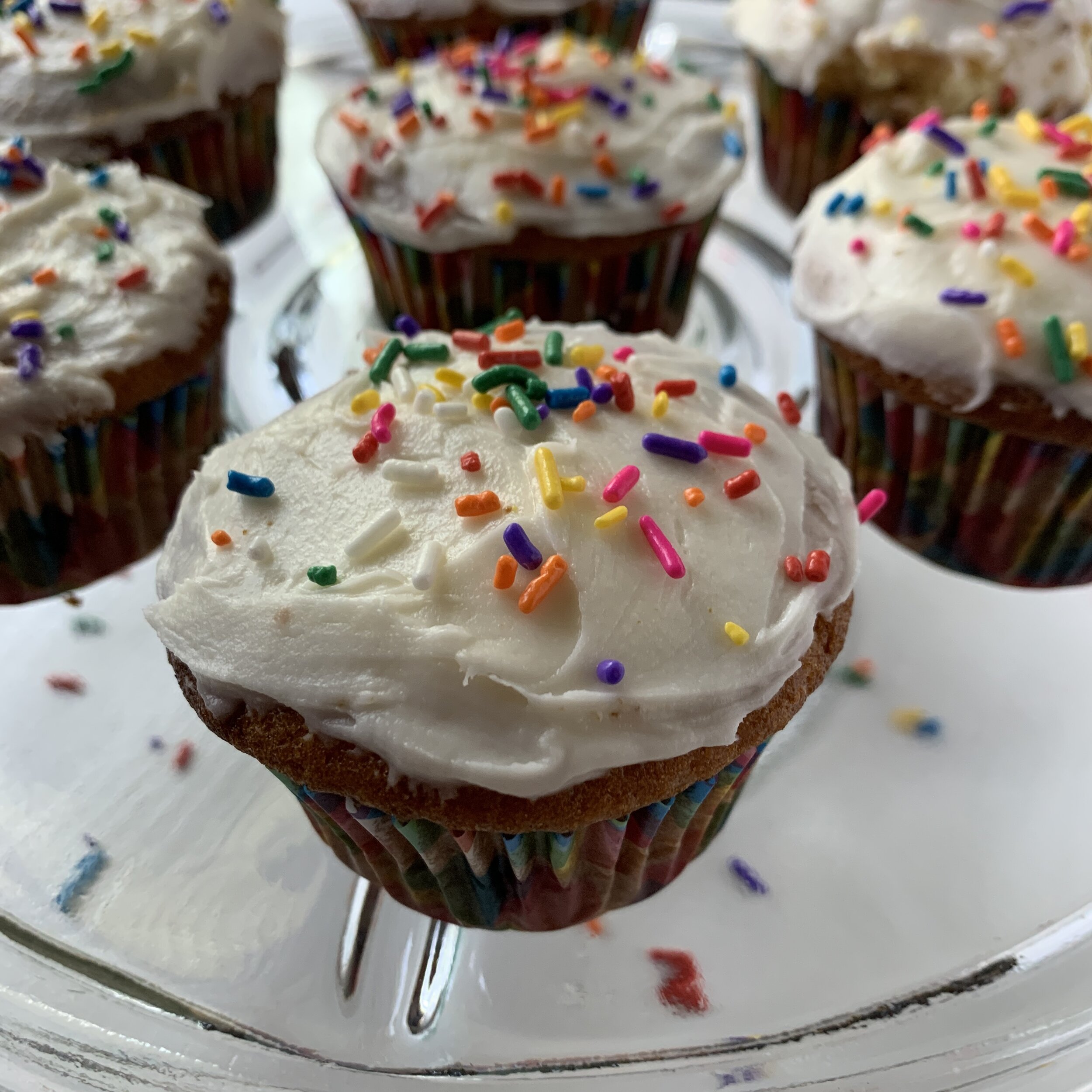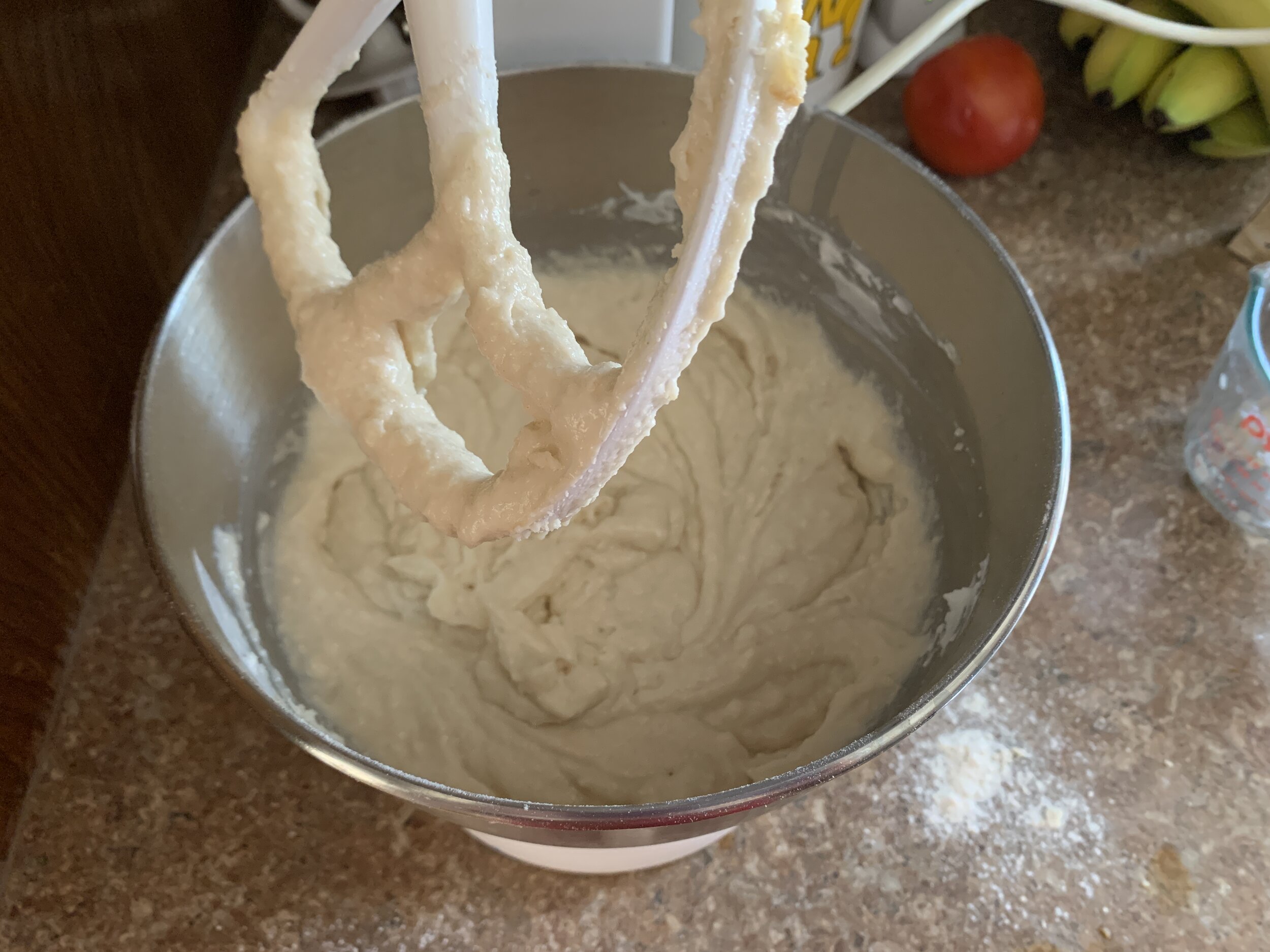Egg-free Birthday Cupcakes
Parents often grieve the loss of a “normal” childhood after the first food allergy reaction or diagnosis.
We rode waves of emotion and grieved as “normal” family experiences suddenly become off limits for our child. Our new reality came with the understanding that a simple birthday party could never be a fun, carefree experience with the threat of food allergens clouding every well-intentioned invitation.
An avid baker, I remained adamant that our peanut-free, nut-free baby would not feel excluded when it came time for treats during our family birthday celebrations.
My goal was to perfect an egg-free birthday cupcake recipe that everyone in our family would enjoy. My initial Google search for egg-free cake resulted in many vegan and gluten-free options, but I struggled to find a good recipe that used milk, butter, and all-purpose flour.
Why was I so steadfast on dairy and wheat in my birthday cupcakes?
It’s really quite simple. A vanilla cupcake recipe doesn’t have the potential to mask new tastes (i.e. non-dairy milk) like its chocolate counterpart. And there is no fooling my four year old - he can taste the difference and will refuse to eat the non-dairy option.
I’ve said it before and I’ll say it again - food allergies affect the entire family. And I wanted to cling to a “normal” family birthday celebration in which everyone can celebrate together by eating the same dessert.
I get that extended family parties, school treats, and other birthday celebrations are out of my control. It is our reality that my food allergy child will often feel singled out during his life. The best that I can do is keep several of these birthday cupcakes in the freezer so he can bring his own safe treat when needed. And I’ll remain positive for a future when we no longer have to worry about a birthday party resulting in an ambulance ride.
But I digress.
My recipe for egg-free birthday cupcakes.
It turns out there is no magic substitute for egg-free baking. Eggs add structure, leavening, flavor, and even color to our baked goods. It takes a variety of ingredient adjustments to address each of the different roles that eggs play.
So the secret to these egg-free cupcakes is actually the method used to mix the cake batter. Unlike the widely-used creaming method which starts by beating the egg and sugar together, my egg-free baking utilizes the reverse-creaming method. This processes first mixes the dry ingredients with the sugar and then adds the fat, which coats the flour particles to minimize gluten formation. The final step involves adding the liquid ingredients into the batter.
So, ready to give it a try?
Step 1: Wash your hands with soap and warm water. Gather your ingredients:
½ cup plain Greek yogurt
1½ cup whole milk
1½ Tablespoons apple cider vinegar
2½ cups all-purpose flour
1 Tablespoon baking soda
1 teaspoon baking powder
1 teaspoon salt
1¼ cup sugar
¾ cup unsalted butter, softened
1 Tablespoon pure vanilla extract
1 recipe vanilla frosting
Step 2: Measure yogurt and milk. Add vinegar to milk and stir. Set milk and yogurt aside to warm to room temperature.
Step 3: Preheat oven to 350°F. Place cupcake liners in muffin tins.
Step 4: In a large mixing bowl, combine flour, baking soda, baking powder, salt, & sugar.
Step 5: Add butter and mix until evenly distributed into dry ingredients.
Step 6: Add yogurt, milk, and vanilla extract. Mix until completely combined.
Step 7: Use a ¼ cup measurer to evenly pour batter into muffin tins. Bake at 350°F for 20-22 minutes (24-26 minutes for jumbo muffins), or until a toothpick inserted into center of muffin comes out clean.
Step 8: Let muffins cool in pans set on a wire rack. After 10 minutes, remove cupcakes from muffin tins and let cool on wire rack. Wait until cupcakes are completely cooled before frosting.
Leftover muffins can be stored at room temperature for 2-3 days or refrigerated for up to 5 days.
To freeze:
Bake as directed and cool to room temperature. Cupcakes can be frozen either frosted or unfrosted. Carefully set cupcakes inside a plastic freezer bag or container. Remove air from bag or container before sealing or use a food saver.
Label container and freeze for 3-6 months for best quality. Thaw at room temperature before eating.
You might also be interested in…








